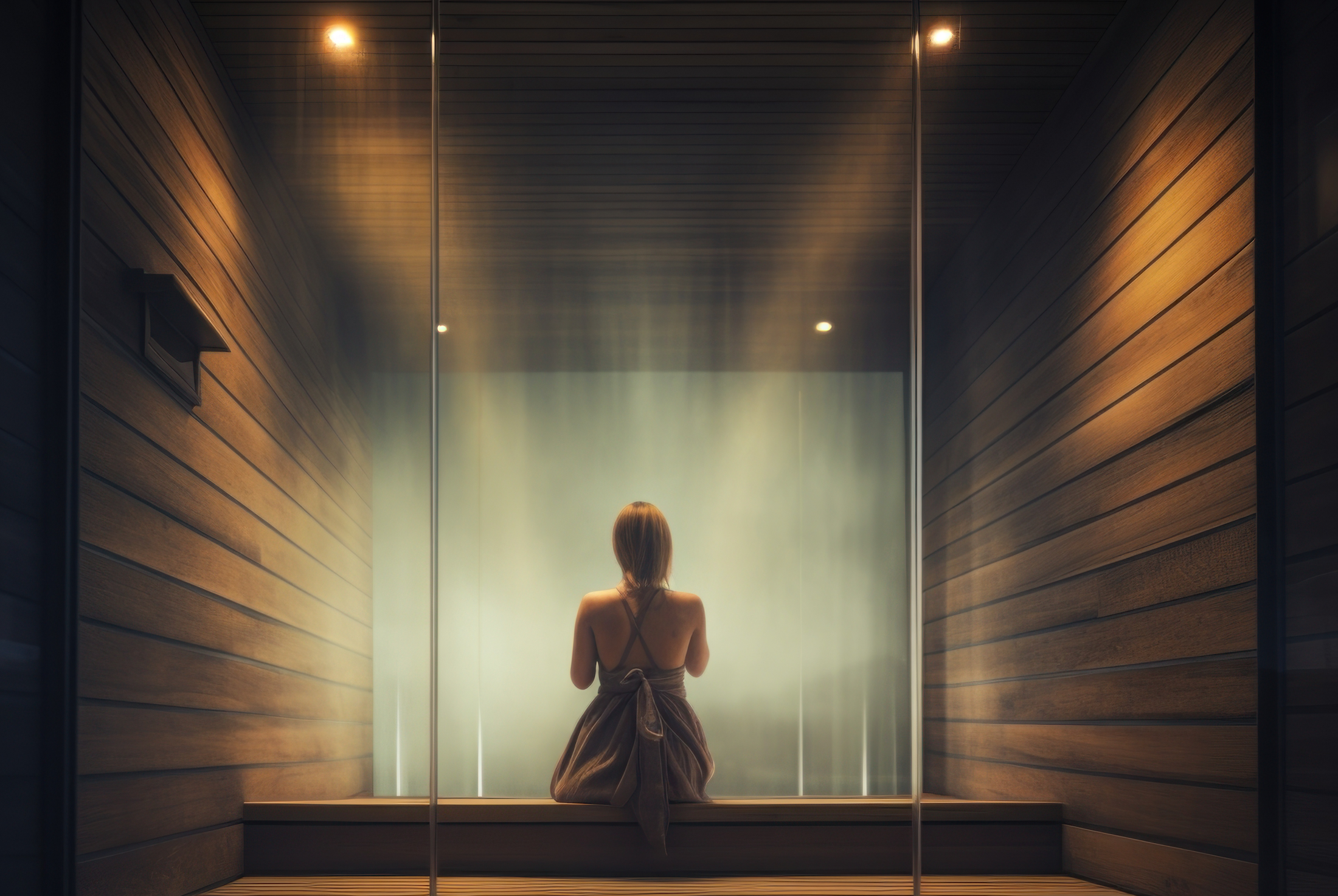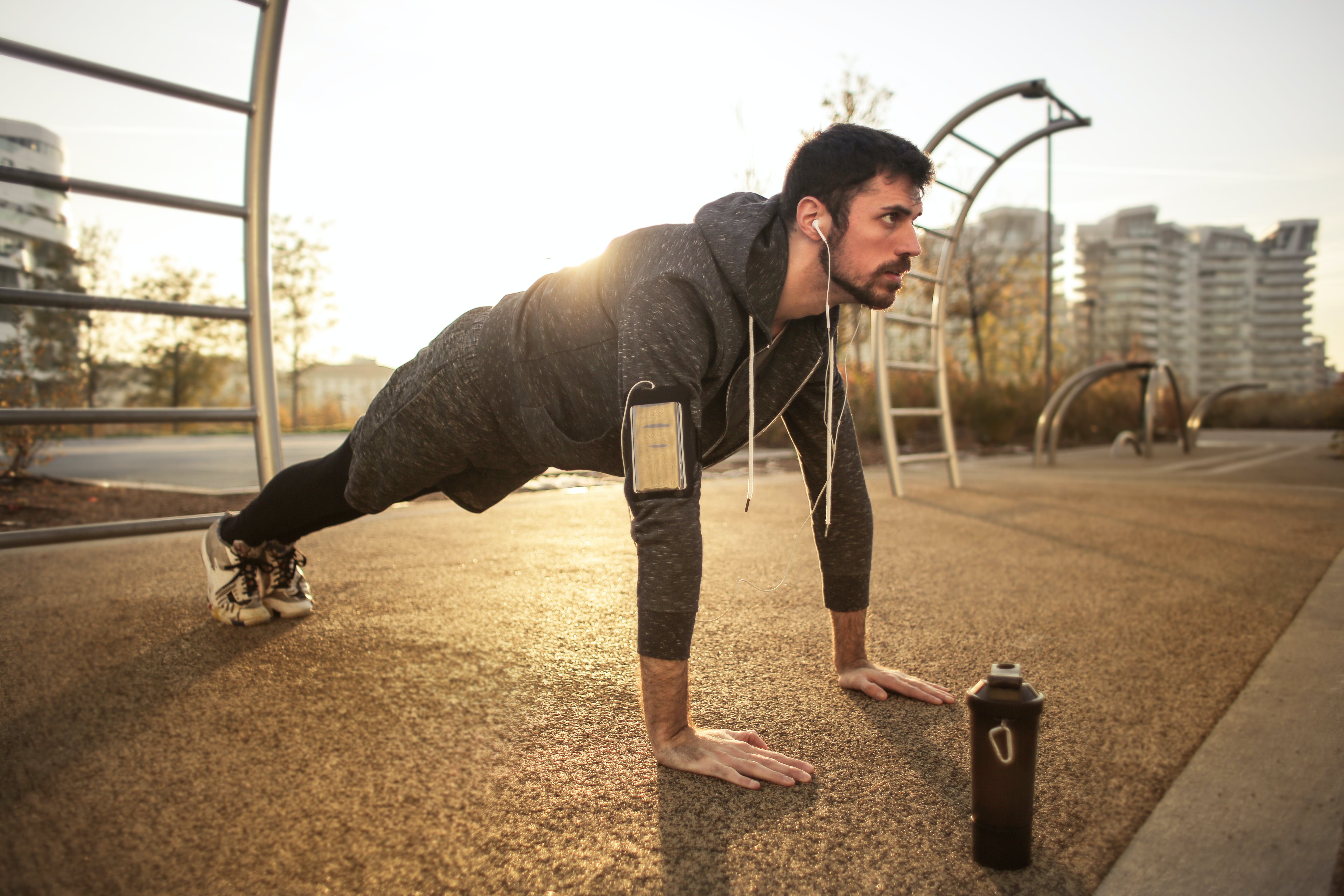- HOME
- Infrared Sauna Benefits
- Cryotherapy vs Infared Sauna
Is Cryo Or Infrared Sauna Better?
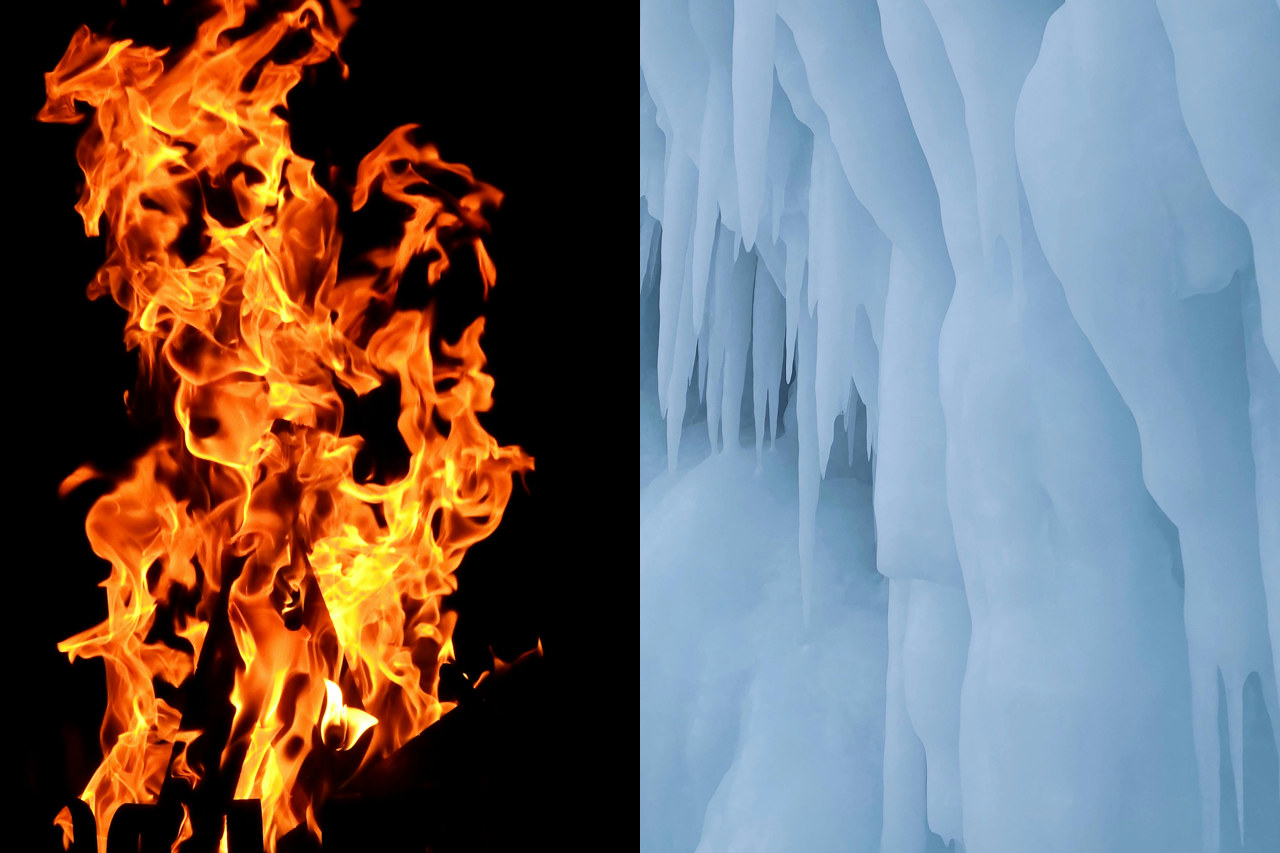
The short answer is neither is “better than the other.” Each method has its benefits, but combined they reinforce the benefits from using just one of these two modalities. If you are considering the innovative approach of integrating both into your life care routine, you've come to the right place!
This blog post explores the background of these two popular wellness trends and then compares the pros and cons of each. The choice between ice and fire is a personally informed decision, guided by extensive information and thorough research, and so is using them next to each other.
A quick tour of the blogpost
- Infrared sauna vs. cryotherapy: a comparison guide
- Cold therapy through time
- Cryotherapy today
- Cryotherapy treatments
- Considerations in cryotherapy
- Benefits of cryotherapy
- Wim Hof, the iceman
- Infrared sauna therapy
- Comparison cryotherapy and infrared sauna therapy (including research)
- Combination of cryotherapy and infrared sauna
INFRARED SAUNA VS. CRYOTHERAPY: A COMPARISON GUIDE
| Category | Infrared Sauna | Cryotherapy |
|---|---|---|
| Muscle Recovery & Pain Relief | Supports recovery and relief through heat | Aids in recovery and relief via cold exposure |
| Detoxification & Skin Health | Promotes detoxification and skin health through sweating | No direct detoxification; limited evidence on skin benefits |
| Sensory Experience | Offers a soothing, relaxing warmth | Provides an invigorating, intense cold |
| Home Options | Cabins and portable devices available | Cold plunges (ready-made or DIY), cryo portable devices, cold packs and cold shower |
| Portability | Sauna domes, tents, blankets, PEMF mats, lamps | Cryo devices/cold packs/portable plunges |
| Session Duration & Frequency | Sessions last 20-40 minutes, frequency varies by individual | Short sessions of 2-3 minutes, frequency depends on personal goals and response |
| Cost Consideration | Initial investment and ongoing electricity costs | Investment costs vary by option. Ongoing expenses for water and electricity for cooling |
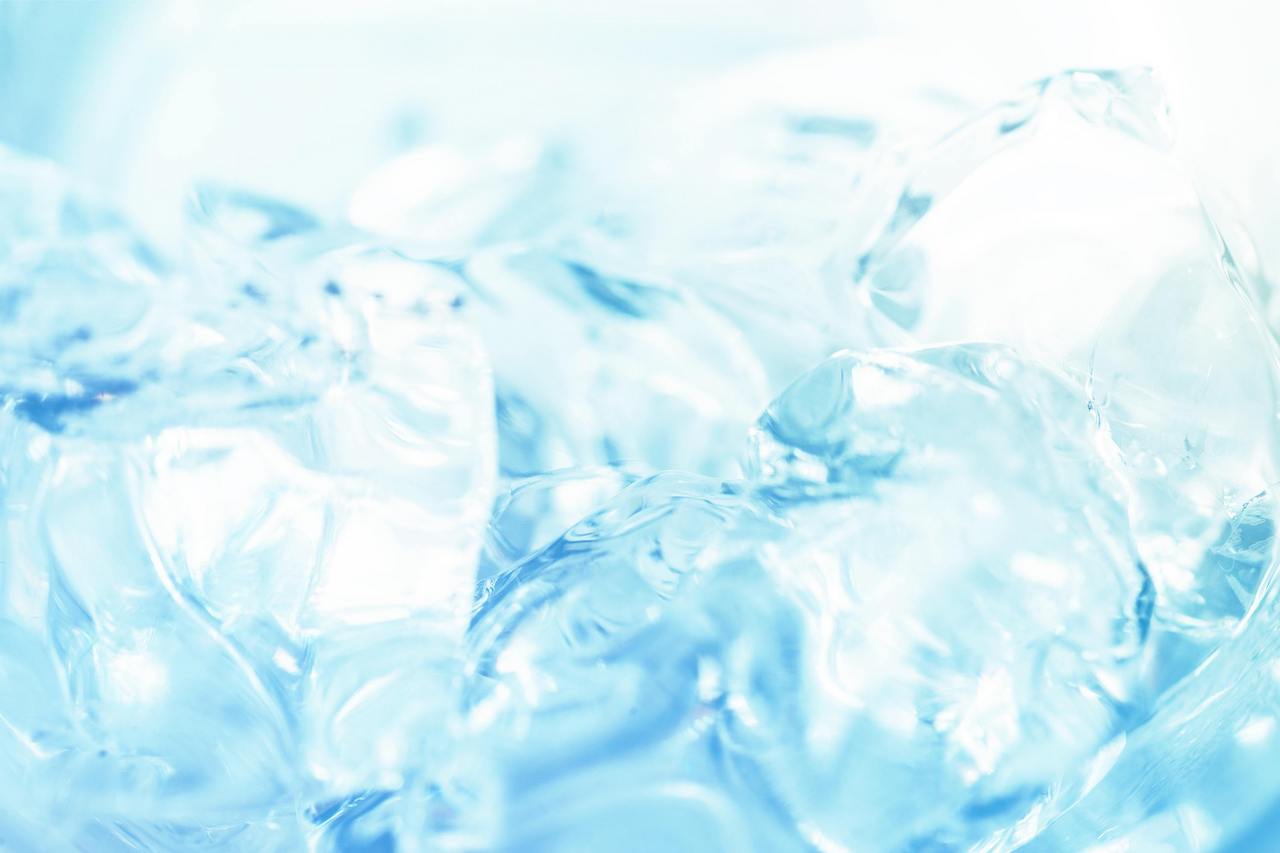
Cold therapy through time
Cold therapy has a long and impressive history [1]. The earliest example of such treatment is found in the Edwin Smith Papyrus, which dates back to ancient Egypt around 3500 BC. The cold therapy practice, itself, gained prominence in ancient Greece.
Cryotherapy is derived from the Greek words "cryo" meaning cold and "therapy" meaning treatment. Hippocrates (460 – 370 BC) used ice and snow for medicinal purposes, including reducing oedema. He believed that cold water could "cure everything".
The 20th century saw a more scientific approach to cryotherapy, with advancements in understanding physiological responses to cold-water immersion. Edgar A. Hines Jr., for example, developed the cold-pressor test in the early 1930s to study blood pressure variability in response to cold, laying the groundwork for modern cryotherapy techniques.
The development of Whole-Body Cryotherapy (WBC) by Dr. Toshima Yamaguchi in Japan in 1978 marked a milestone. Yamaguchi's work, initially aimed at treating rheumatoid arthritis, showed the profound effects of exposing the body to extremely cold air. These findings lead to a widespread adoption of WBC for various therapeutic and recovery purposes.
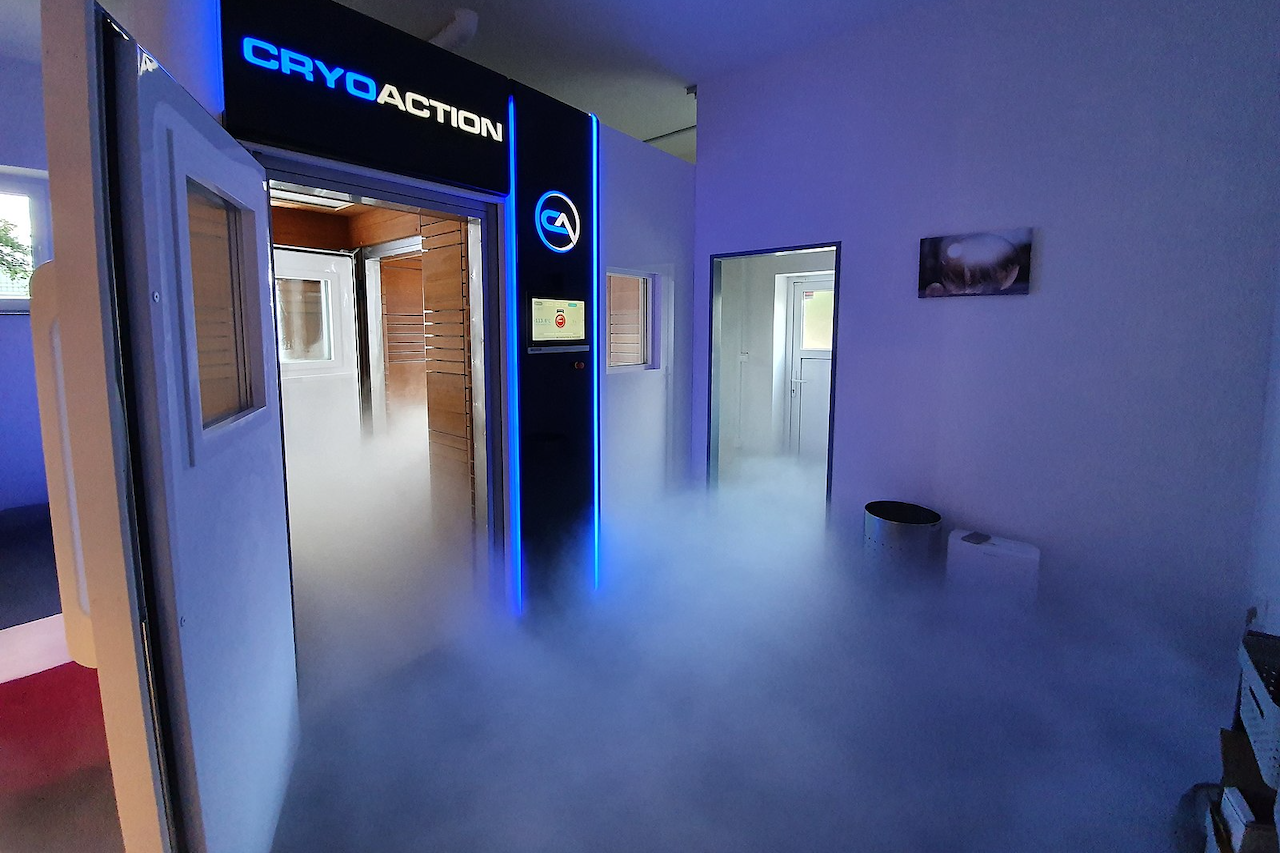
Cryotherapy today
In recent years, cryotherapy has gained popularity in the United States and Western Europe, particularly among athletes, celebrities, and fitness enthusiasts.
This growing interest has transformed cryotherapy from a niche treatment into a widely sought-after solution for its health and performance benefits.
Sports and Athletics
Cryotherapy has become a staple in sports medicine, used by professional athletes and teams to speed up recovery and ameliorate performance.
Wellness and Spa Industry
The wellness and spa sector globally has embraced cryotherapy, offering treatments that aim to advance well-being, beauty, and relaxation.
Medical and Therapeutic Use
In the medical field, cryotherapy complements treatments for conditions such as arthritis, fibromyalgia, and various skin disorders, showcasing its therapeutic versatility.
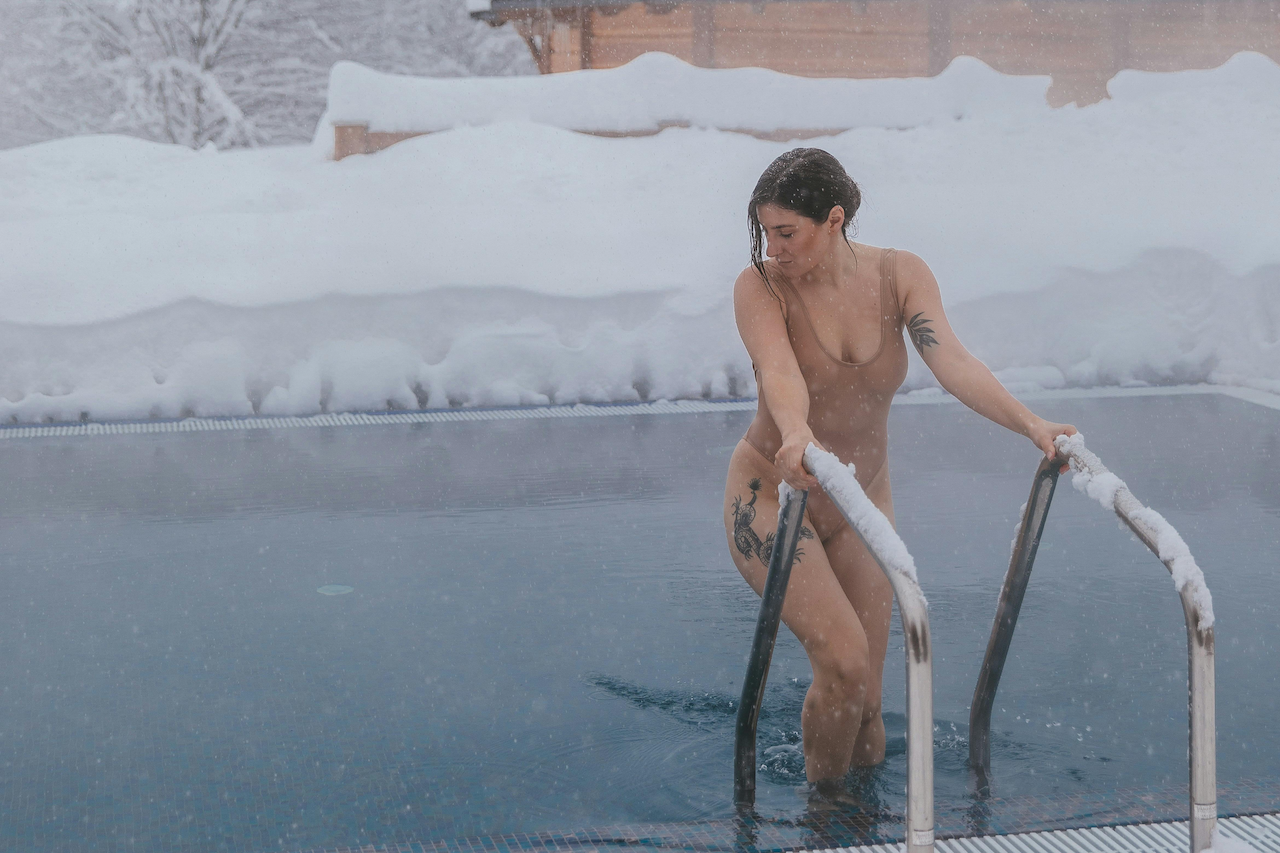
cryotherapy treatments
Cryotherapy, or cold therapy, involves a range of techniques that uses cold temperatures for therapeutic effects. Here are the most popular ones:
Cold Showers: Easily incorporated into daily routines, cold showers are known to invigorate the body, potentially boosting circulation and enhancing mental alertness.
Ice Packs: Commonly used for immediate relief, ice packs reduce swelling and alleviate pain after injuries or surgical procedures.
Cold Plunges: Popular in spas and among athletes, cold plunges involve immersing the body in ice-cold water, believed to reduce muscle inflammation and accelerate recovery. [2]
Cryofacials: Specialized facial treatments using cold air or liquid nitrogen, cryofacials aim to tighten pores, reduce wrinkles, and improve skin elasticity.
Localized Cryotherapy: Focused on specific areas, this method employs handheld devices that deliver cold air or liquid nitrogen directly to treat localized injuries or discomfort.
Whole Body Cryotherapy (WBC): This advanced method exposes the entire body to extremely cold air (-200°F to -256°F), within a cryogenic chamber, often used by athletes for its quick recovery benefits and performance enhancement.
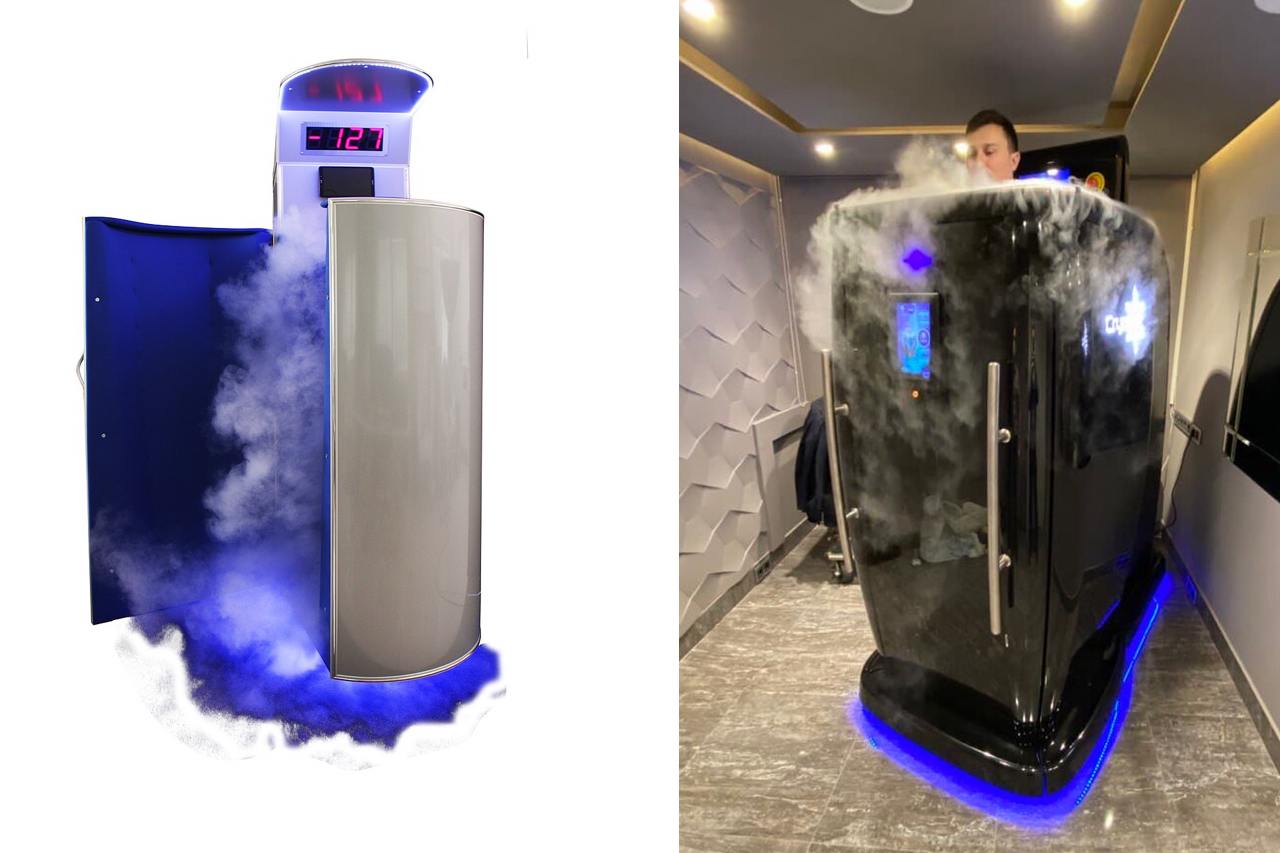
Considerations in Cryotherapy
While each method has its own set of considerations, it's crucial to understand the broader impacts and individual risks associated with these treatments.
Accessibility and Safety
While professional setups achieve extreme cold, flexible home solutions offer more accessible yet less intense alternatives. However, those with specific health conditions, such as Raynaud's phenomenon [3] or severe cardiovascular issues, should avoid these therapies due to potential risks. Whole body cryotherapy, in particular, carries unique risks and its therapeutic benefits remain unconfirmed. [4]
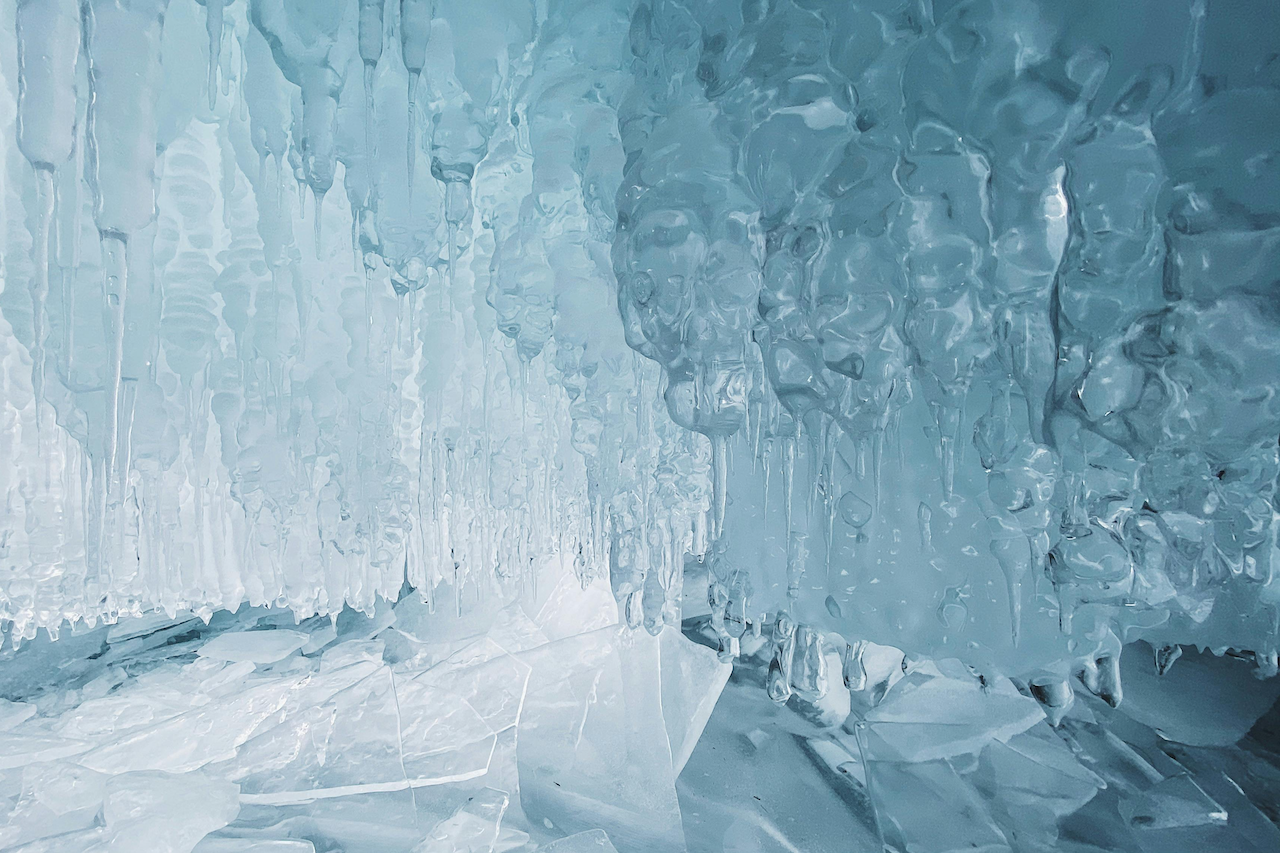
Economic and Insurance Considerations
The cost of professional cryotherapy sessions can be prohibitive for many, and such treatments are not covered by all health insurance policies. This financial barrier makes home solutions more appealing to those seeking affordable options.
Environmental Impact
The operation of cryogenic chambers requires significant electrical energy, contributing to energy consumption concerns. Additionally, the production and processing of nitrogen, commonly used in localized treatments, raise environmental concerns related to gas extraction and management.
Potential Side Effects
While cryotherapy is generally regarded as safe, there are potential side effects, including temporary redness, numbness, and tingling. More severe risks, such as frostbite and burns, can occur if treatments are not administered correctly.
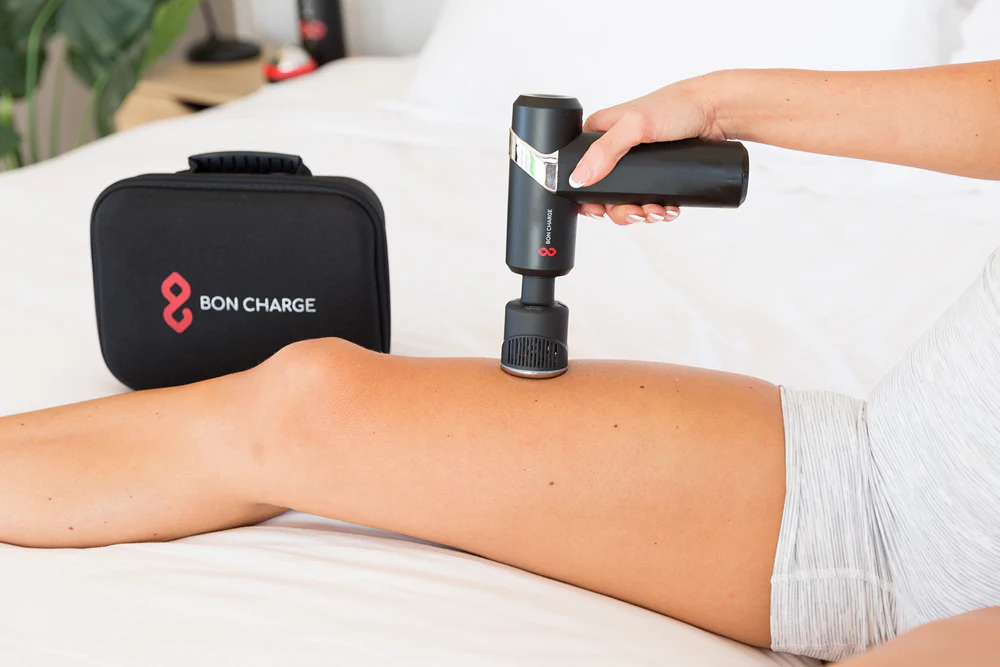
Bon Charge Cold & Heat Therapy Massage Gun - $ 175 (get 15% discount using our code: SAUNACE15)
Benefits of cryotherapy
Cryotherapy offers several health benefits. In recent years, a lot of research has been done into the application of this cold therapy in various areas. It should be noted that all of these studies are carried out with professional equipment, often cryo chambers, in controlled conditions.
Muscle Recovery and Soreness Reduction
Cryotherapy is popular among athletes for its potential to accelerate muscle recovery and reduce soreness after intense physical activity. The cold exposure helps in reducing inflammation and numbing pain.
To successfully apply cryotherapy [5] to an injury or to limit damage after strenuous exercise, it is necessary that cryotherapy is applied (in abundance) within the first few hours of the injury.
Research [6] also showed that the benefits of cooling for reducing muscle soreness and perceived exertion are greatest in the short term. Especially within the first 24 to 96 hours after training.
Inflammation Reduction
One of the key benefits of cryotherapy is its ability to reduce systemic inflammation, which is linked to numerous chronic health conditions.
This 2023 study [7] suggested that WBC may serve as a supportive treatment for several chronic inflammatory conditions due to its strong anti-inflammatory properties and may also benefit obese individuals experiencing chronic inflammation.
Another study [8] on cryotherapy in inflammatory rheumatic diseases showed that both local cryotherapy and whole body cryotherapy can significantly reduce pain and disease activity in patients with rheumatoid arthritis.
It suggests that cryotherapy is a complementary treatment to traditional treatments.
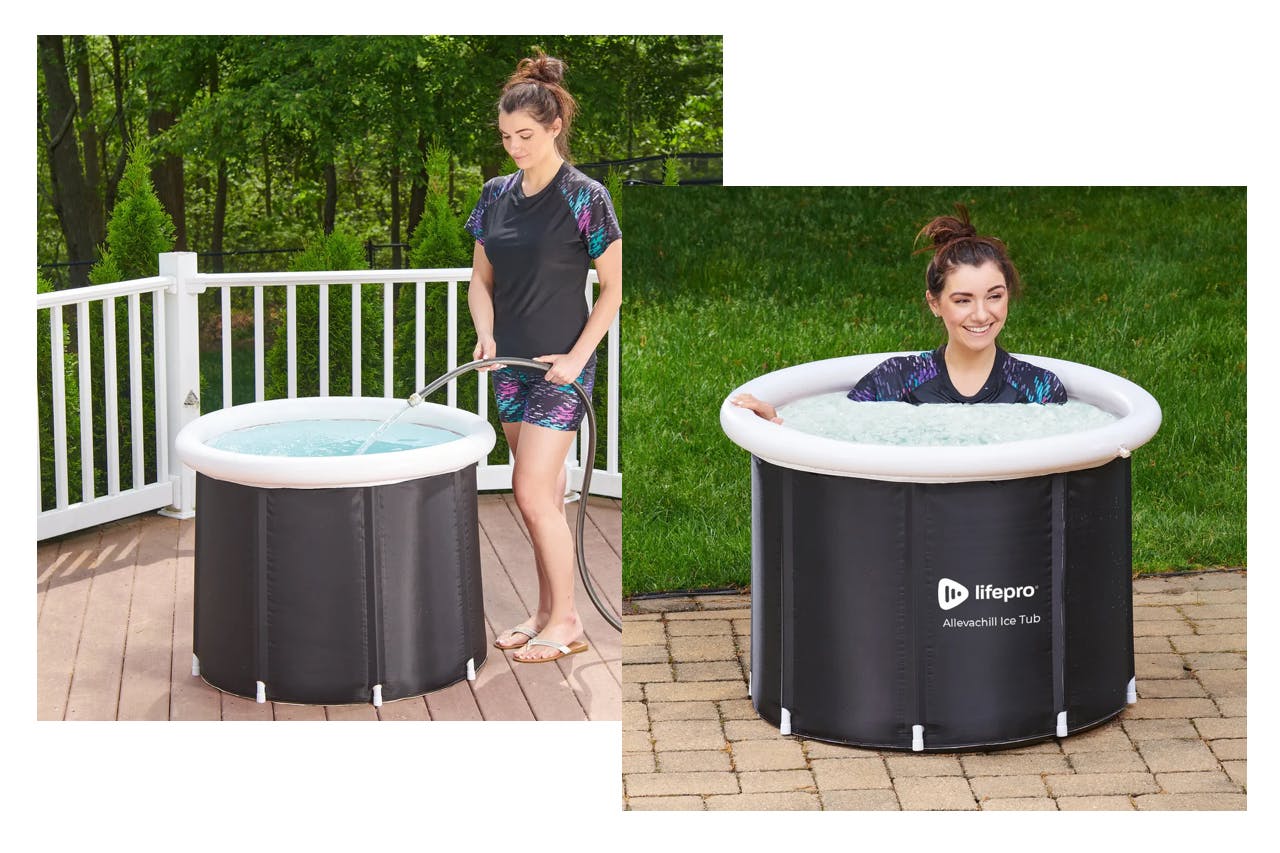
Allevachill™ Recovery Ice Tub - $ 99,99 at LifePro
Sleep Quality
In a study [9] focused on middle- and long-distance runners, researchers examined the benefits of whole-body cryotherapy on various aspects of recovery.
The results showed that cryotherapy was particularly effective at raising subjective sleep quality next to reducing muscle damage and inflammation.
Pain Management
Cryotherapy, both local and non-local, has been shown in research [10] to be a low-risk practice to manage chronic pain. However, the researchers did indicate that they wanted to conduct more research into the long-term effects.
Mood Enhancement
Exposure to cold temperatures during cryotherapy can trigger the release of endorphins, the body's natural mood stimulant. This can lead to a feeling of euphoria, similar to the 'runner's high' you experience after aerobic exercise.
This research [11] shows that WBC can substantially elevate mental health outcomes. In particular, it has shown promise in alleviating mood disorders, including depression.
It suggests that WBC could be a valuable complementary therapy to further general well-being and quality of life, especially for individuals struggling with mood-related issues.
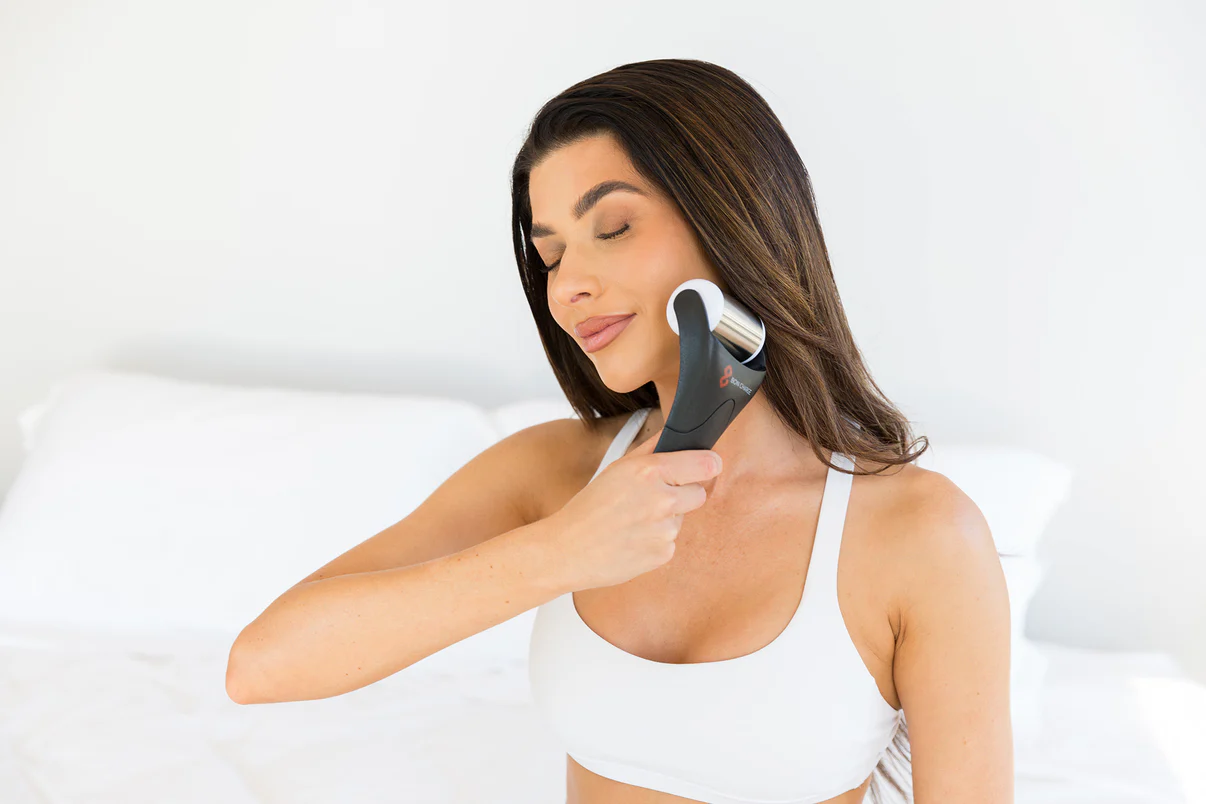
Bon Charge Ice Roller - $ 42,95 (get 15% discount using our code: SAUNACE15)
Metabolic Boost
Some proponents of cryotherapy claim that it can rev up metabolism, as the body works harder to maintain its core temperature during and after exposure to extreme cold. This could potentially aid in weight loss efforts.
One study [12] examined the effect of whole body cryotherapy (WBC) on metabolism, especially in postmenopausal women with metabolic syndrome (MetS) [13] and healthy women, suggests that it leads to reductions in abdominal obesity.
After twenty WBC sessions, both MetS and healthy women experienced marked reductions in body mass (BM), body mass index (BMI), waist circumference, triceps skinfold, total fat mass and percentage of leg fat.
Skin Conditions
Anecdotal evidence suggests that cryotherapy can uplift the appearance of the skin by reducing inflammation and stimulating collagen production, which could potentially help treat certain skin conditions such as eczema.
Although we did not find direct evidence for this, we are happy to share the findings of these two studies:
Atopic Dermatitis: This study [14] suggests that Whole Body Cryotherapy (WBC) may be an effective and supportive method in the treatment of atopic dermatitis (AD) due to effects on skin hydration and reduction of AD intensity observed during the study.
This implies that cryotherapy may help relieve the dry skin and itching associated with AD.
Skin Safety: The findings of another study [15] show that whole body cryotherapy (WBC) has no noticeable impact on skin hydration and pH, and in fact leads to a considerable decrease in sebum levels after a second session. This suggests that WBC is safe for the skin.
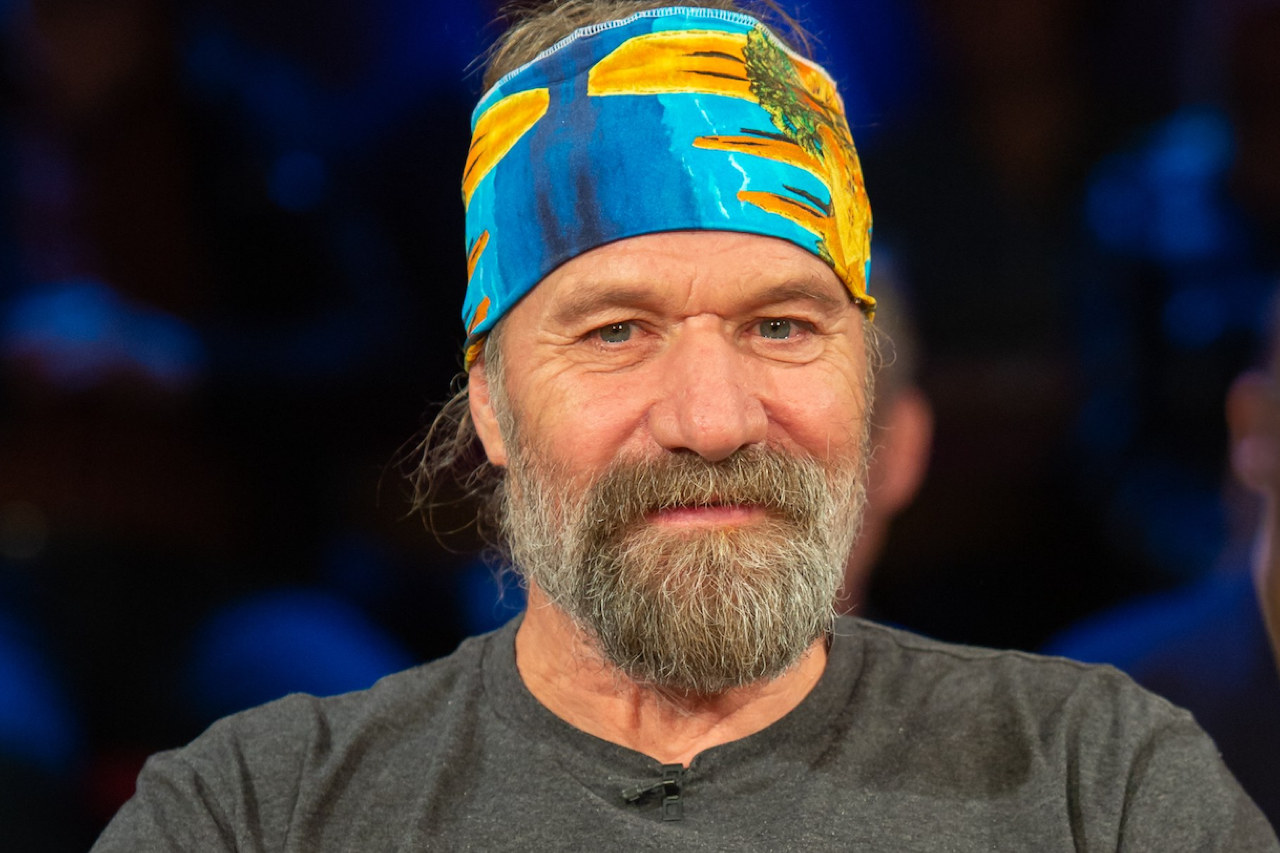
Wim Hof AKA the Iceman
The iceman
Wim Hof, also known as 'The Iceman', is a Dutch extreme athlete known for his ability to withstand freezing temperatures. He developed the Wim Hof method, a combination of cold exposure, breathing techniques and meditation.
The Wim Hof Method
Hof’s method involves regular taking of cold showers, ice baths and outdoor activities in cold environments. Hof states that this leads to several health benefits: reduced inflammation, better sleep, increased energy levels, and a reinvigorated immune system.
Scientific research
Although Hof's method is received with some skepticism by science, research into aspects of his method is ongoing.
Studies have examined the effects of breathing techniques and cold exposure on the autonomic nervous system and immune response, with some findings supporting the potential of controlled cold exposure for health benefits.
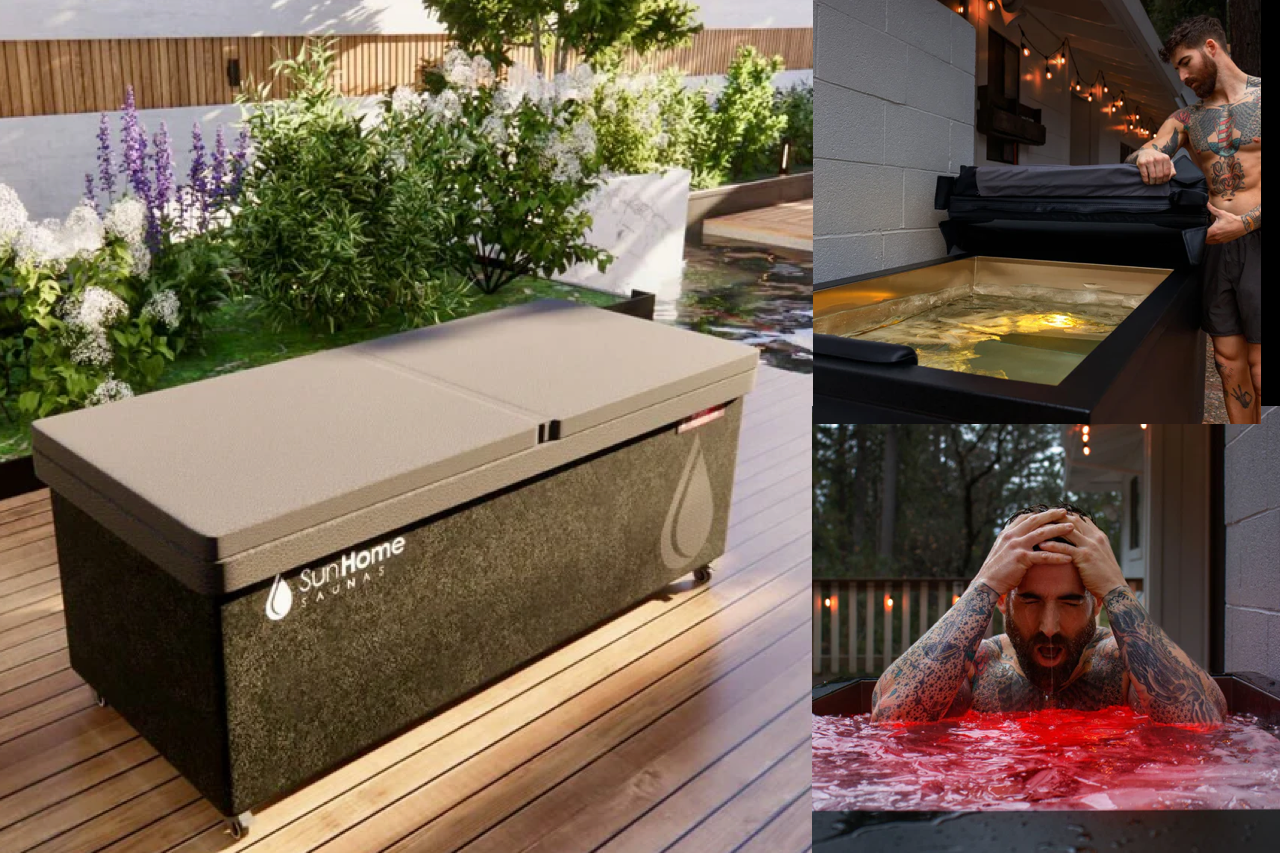
A Selection of Scientific Articles Concerning The Hof Method
- The effectiveness of the Wim Hof method on cardiac autonomic function, blood pressure, arterial compliance, and different psychological parameters - 2023 [16]
- Acute Effects of the Wim Hof Breathing Method on Repeated Sprint Ability: A Pilot Study - 2021 [17]
- Widespread Incorrect Implementation of the Hoffmann Method, the Correct Approach, and Modern Alternatives - 2019 [18]
Infrared sauna therapy
As we transition to a comparison of cryotherapy vs. infrared therapy, we will briefly touch on the essentials of this heat therapy.
Infrared saunas use the power of infrared light to penetrate the skin and provide deep, therapeutic heat. This method is praised for its numerous health benefits, from improved relaxation and detoxification to increased circulation, reduced inflammation and pain relief, all backed by scientific research.
At first glance this seems a short introduction, but behind it lies a wealth of information. For a more in-depth exploration of infrared sauna therapy and its benefits, our website offers extensive resources and insights.
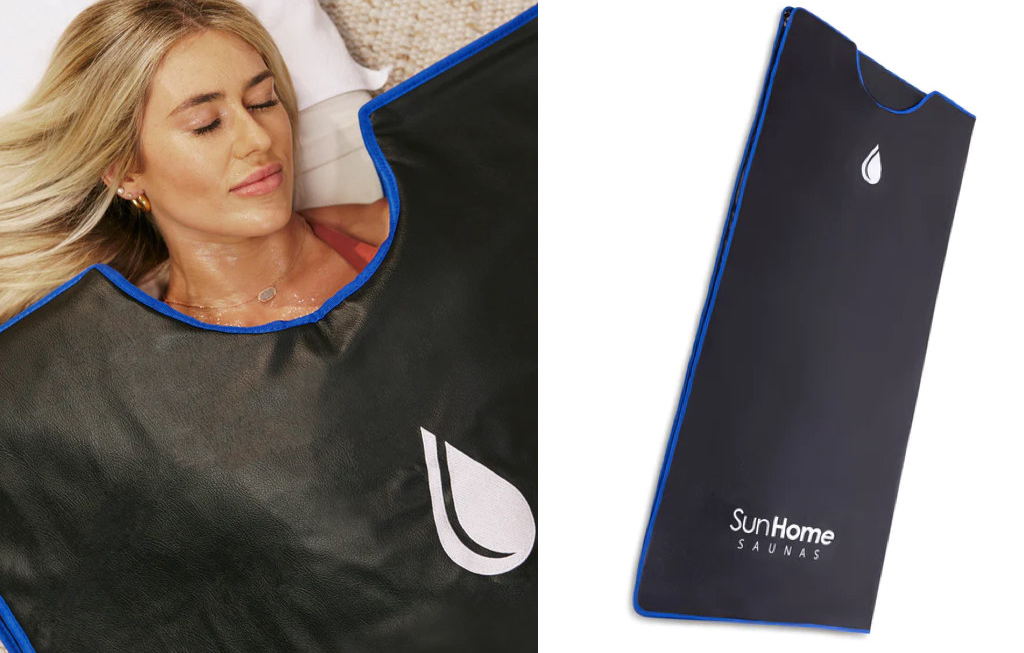
The best infrared sauna blankets - Review 2024
Ready for a comparison?
Comparing infrared saunas and cryotherapy feels like choosing between the heat that can melt away your stress versus the cold that can stimulate your senses. The ultimate question is what feels good for you.
Muscle Recovery & Pain Relief
Although the approach is clearly different, both the heat of the infrared sauna and the cold of cryotherapy lead to muscle recovery and pain relief. The effectiveness of both is also supported by scientific research.
Detoxification & Skin Health
The infrared sauna stands out in terms of detoxification and skin health: the infrared sauna promotes sweating, leading to detoxifying effects and potential skin health benefits. This contrasts with cryotherapy, which lacks direct detoxification through sweating, and its skin-related benefits are not supported by scientific evidence.
Sensory Experience: Heat vs. Cold
In the sensory confrontation between heat and cold, the infrared sauna produces a gentle, penetrating warmth that can soothe and relax.
On the flip side, cryotherapy employs an intense, invigorating cold that can be exhilarating and a strong shock to the system that, while potentially stimulating, can also prove to be uncomfortable for some people.
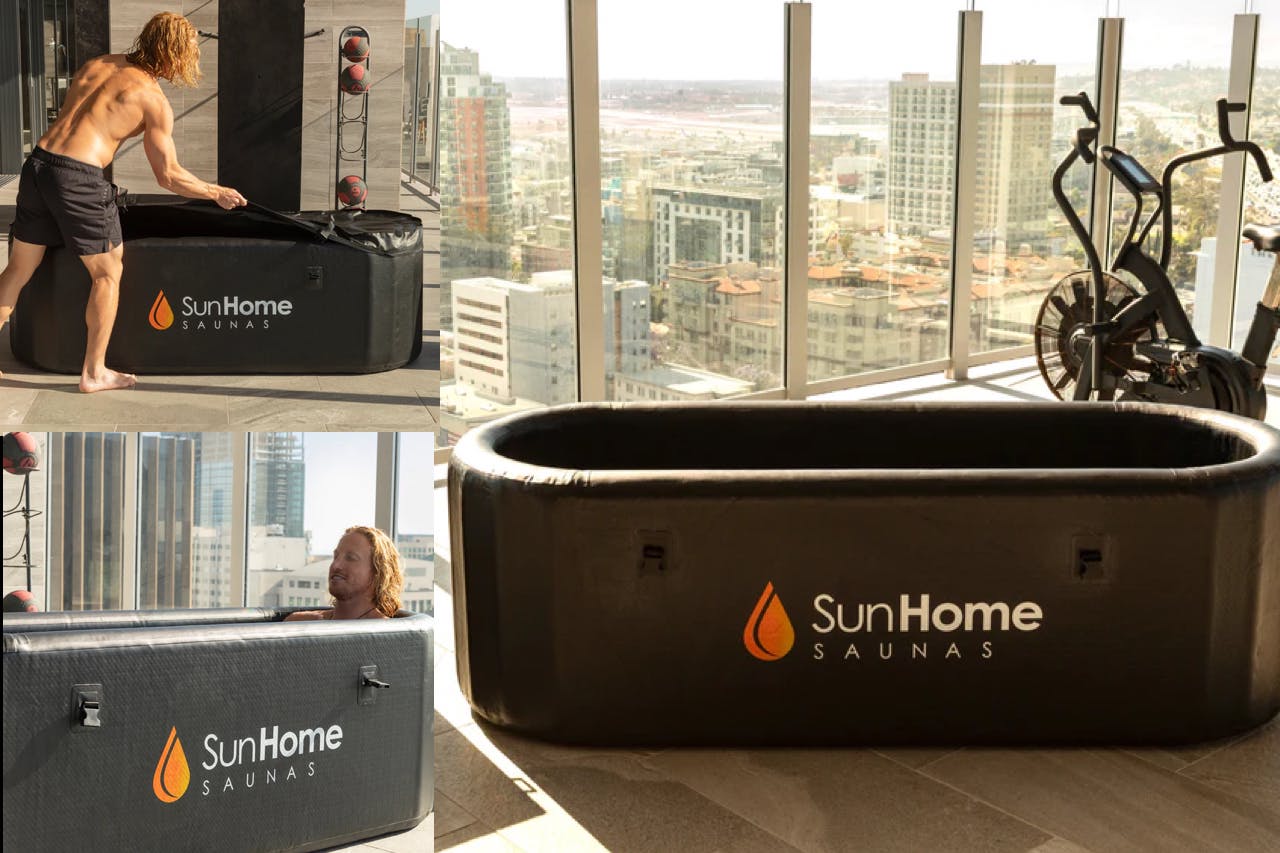
Sun Home Cold Plunge™ Portable Ice Bath With Chiller
Ease of Use & Accessibility
Infrared saunas are widely available, including portable models for home use that integrate seamlessly into daily self-care routines.
Similarly, home cold therapy options such as cold showers and ice packs are easy to apply. The cost of cold plunges can vary, with some models reaching up to $10,000. For those seeking a more budget-friendly approach, there are numerous DIY cold plunge projects available online, offering a range of ideas that can be tailored to individual needs and budgets.
Portability & Installation
In recent years, both infrared saunas and cryotherapy have become more accessible for home use.
Infrared saunas such as tents, blankets, and mats are available. These are easy to use and immediately ready for heat therapy.
In the field of cryotherapy, there are of course cold packs ready for use in your freezer. In addition, small portable devices for local cold treatments. Cold showers or ice baths are just as easy, DIY plunges are popular. Portable, ready-to-use cold ones are also available.
While these home-based cryo solutions may not fully replicate the intensity of professional treatments, it’s a practical way to integrate the benefits of cryotherapy into your daily routines.
Session Duration & Frequency
Infrared sauna sessions typically range from 20 to 40 minutes. The recommended frequency may vary based on your health goals and tolerance, but many enthusiasts do several sessions a week.
In stark contrast, cryotherapy sessions are short, lasting only 2 to 3 minutes due to the intense cold exposure. Despite the short duration, the effects are powerful and stimulate rapid physiological responses.
The optimal frequency for cryotherapy also depends on personal goals and response. Some users take daily sessions, others find a few times a week sufficient to meet their needs.
Both therapies ask for a personal approach, with an emphasis on listening to your body. Consult a doctor prior to starting a new form of selfcare, especially if you are doubtful or experience specific health issues.
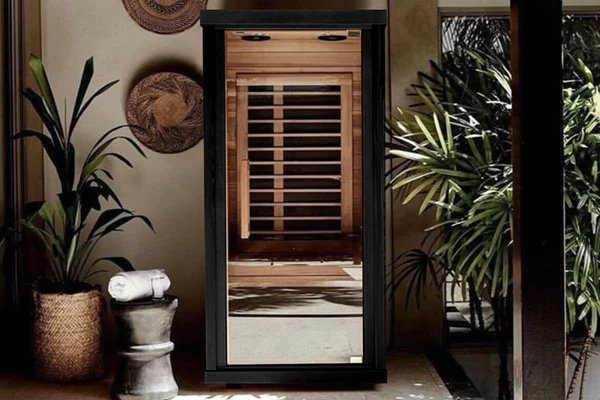
Cost Consideration
In terms of home use, the investment in infrared saunas can range from a few hundred to several thousand dollars, with ongoing electricity costs for operation.
Similarly, home cryotherapy options, such as the portable devices and cold plunges, vary in price. While the smaller, portable cryotherapy devices can offer a cost-effective initial purchase, they also involve ongoing expenses related to both water use and electricity for cooling mechanisms. Ready-made cold plunges, particularly high-end models, can be significantly more expensive, with some costing up to $10,000.
RESEARCH
During our research into the differences between cryotherapy and infared saunas we stumbled on this recent 2022 research: ‘Comparison between cryotherapy and photobiomodulation in muscle recovery: a systematic review and meta-analysis’. [19]
The study examined scientific articles up to June 2021 to see how these therapies worked on healthy adults after exercising.
Photobiomodulation (PBMT), another name for red light therapy, uses both visible red light and 'invisible' near infrared radiation up to 850 nm.
The main findings are that PBMT seems to be better than CRT in several ways. It helps optimize muscle strength more effectively, reduces muscle soreness better, and lowers the levels of substances in the body that indicate muscle damage.
Although both treatments were similar in their effects on oxidative stress and inflammation, which are related to how the body responds to damage and healing.
The researchers concluded that PBMT is likely a better option for helping muscles recover after intense exercise, based on the evidence they reviewed. They also noted that the certainty of their conclusions varies from moderate to very low because of the differences in the quality and results of the studies they analyzed.
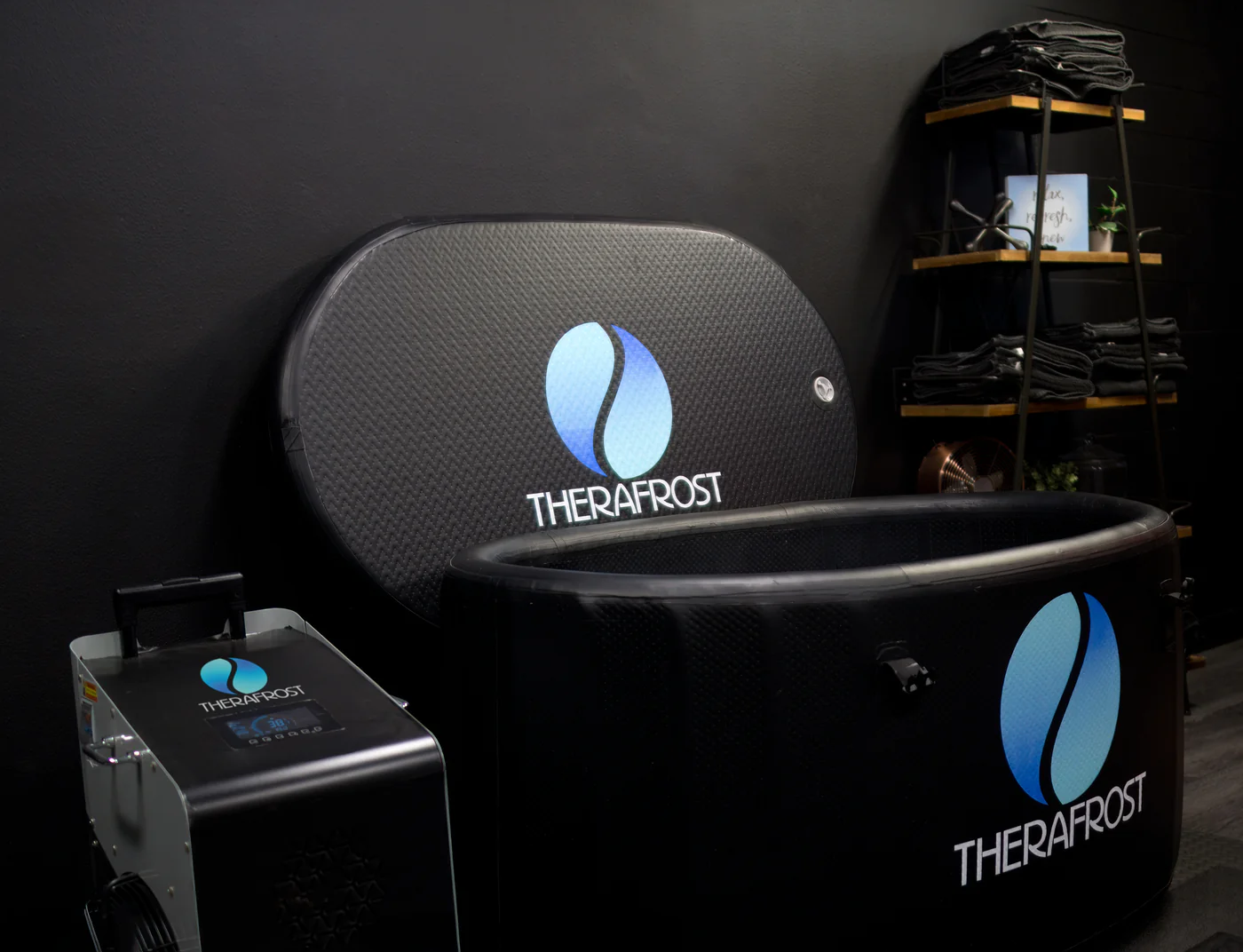
Therafrost The Ultimate Plunge
Can You Combine Cryotherapy And Infrared Sauna?
Yes, that's possible. The combination is already practiced by many. The general idea is that alternating exposure to cold and heat causes a 'shock and awe' response in the body, which activates various healing processes.
THE SYNERGISTIC BENEFITS
This dual approach supports immune function, enhances pain relief, stimulates blood flow, improves sleep, boosts physical performance, rejuvenates skin, and reduces stress.
Getting started
Before beginning, ensure adequate hydration—drink fluids before, during, and after sessions. Always listen to your body's signals and consult a healthcare provider before starting these therapies, particularly if you have underlying health issues.
For a safe transition, the emphasis is on timing and getting your body ready for the transition between extreme temperatures.
RECOMMENDED SEQUENCE
Typically, it's advisable to use the infrared sauna first. This heats the body, promoting vasodilation and detoxification. Following with cryotherapy helps constrict tissues and blood vessels, reducing inflammation and easing pain.
For more in-depth information on the benefits of alternating cold and heat therapies, check out our blog post 'Cold Plunge and infrared Sauna'.
So, ultimately the choice between cryo or infrared sauna is not determined by which is better but comes down to personal preferences, specific health goals and your comfort with heat versus cold.
For those intrigued by the possibilities of infrared sauna therapy combined with red light therapy, our website features many articles that closely examine their benefits and have practical tips for usage. These resources may render insights that allow you to make informed decisions tailored to your needs and wishes.
Saunace is supported by its audience. When you purchase through links on our website, we may earn an affiliate commission. For more information on our affiliate policy, click here.
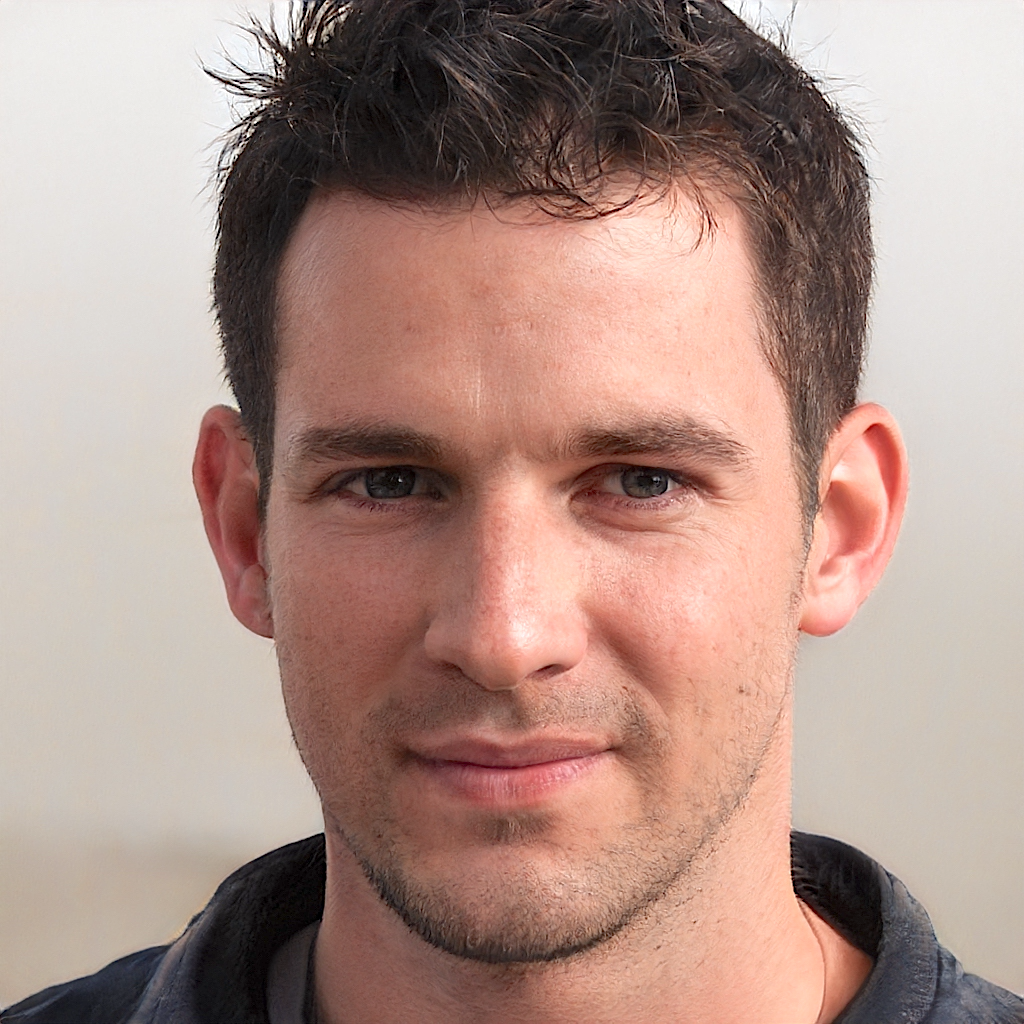
Sam Everhart
References
1. Robert Allan et al., Cold for Centuries: a Brief History of Cryotherapies to Improve Health, Injury and Post-exercise Recovery, Springer, https://www.ncbi.nlm.nih.gov/pmc/articles/PMC9012715/
2. Cleveland Clinic, Brrr! What To Know About Cold Plunges, Health Essentials, https://health.clevelandclinic.org/what-to-know-about-cold-plunges
3. Johns Hopkins, Raynauds Phenomenon, https://www.hopkinsmedicine.org/health/conditions-and-diseases/raynauds-phenomenon
4. FDA, US Food And Drug Administration, Cold Facts to Help Avoid Injury from Water-Circulating Hot/Cold Therapy Devices, https://www.fda.gov/consumers/consumer-updates/cold-facts-help-avoid-injury-water-circulating-hotcold-therapy-devices
5. Susan Y Kwiecien and Malachy P McHugh, The Cold Truth: the Role of Cryotherapy in the Treatment of Injury and Recovery from Exercise, PubMed, https://pubmed.ncbi.nlm.nih.gov/33877402/
6. Erich Hohenauer, et al., The Effect of Post-Exercise Cryotherapy on Recovery Characteristics: A Systematic Review and Meta-Analysis, PubMed, https://pubmed.ncbi.nlm.nih.gov/26413718/
7. Hanna Tabisz et al., Whole-body Cryotherapy as a Treatment for Chronic Medical Conditions? PubMed, https://pubmed.ncbi.nlm.nih.gov/37170956/
8. Xavier Guillot et al., Cryotherapy in Inflammatory Rheumatic Diseases: a Systematic Review, PubMed, https://pubmed.ncbi.nlm.nih.gov/24345205/
9. Chaoyi Qu et al., Cryotherapy on Subjective Sleep Quality, Muscle, and Inflammatory Response in Chinese Middle- and Long-Distance Runners After Muscle Damage, PubMed, https://pubmed.ncbi.nlm.nih.gov/36135034/
10. Carol Garcia et al., Use of Cryotherapy for Managing Chronic Pain: An Evidence-Based Narrative, PubMed, https://pubmed.ncbi.nlm.nih.gov/33315183/
11. Joanna Rymaszewska et al., Efficacy of the Whole-Body Cryotherapy as Add-on Therapy to Pharmacological Treatment of Depression-A Randomized Controlled Trial, PubMed, https://pubmed.ncbi.nlm.nih.gov/32581890/
12. Magdalena Wiecek et al., Whole-Body Cryotherapy Is an Effective Method of Reducing Abdominal Obesity in Menopausal Women with Metabolic Syndrome, PubMed, https://pubmed.ncbi.nlm.nih.gov/32872598/
13. Metabolic Syndrome, Johns Hopkins Medicine, https://www.hopkinsmedicine.org/health/conditions-and-diseases/metabolic-syndrome
14. Magdalena Kepinska-Szyszkowska et al., Assessment of the Influence Systemic Cryotherapy Exerts on Chosen Skin Scores of Patients with Atopic Dermatitis: Pilot Study, PubMed, https://pubmed.ncbi.nlm.nih.gov/32964034/
15. Misiorek Anna and Szyszkowska-Kępińska Magdalena, Evaluation of the influence of whole-body cryotherapy on selected skin parameters in healthy individuals: Pilot study, PubMed, https://pubmed.ncbi.nlm.nih.gov/33794188/
16. Sascha Ketelhut et al., The Effectiveness of the Wim Hof Method on Cardiac Autonomic Function, Blood Pressure, Arterial Compliance, and Different Psychological Parameters, PubMed, https://pubmed.ncbi.nlm.nih.gov/37845341/
17. Tom Citherlet et al., Acute Effects of the Wim Hof Breathing Method on Repeated Sprint Ability: A Pilot Study, PubMed, https://pubmed.ncbi.nlm.nih.gov/34514386/
18. Daniel T Holmes and Kevin A Buhr,Widespread Incorrect Implementation of the Hoffmann Method, the Correct Approach, and Modern Alternatives, PubMed, https://pubmed.ncbi.nlm.nih.gov/30475946/
19. João Vitor Ferlito et al., Comparison between cryotherapy and photobiomodulation in muscle recovery: a systematic review and meta-analysis, PubMed, https://pubmed.ncbi.nlm.nih.gov/34669081/
Keep the momentum going – more insightful articles are just a click away
